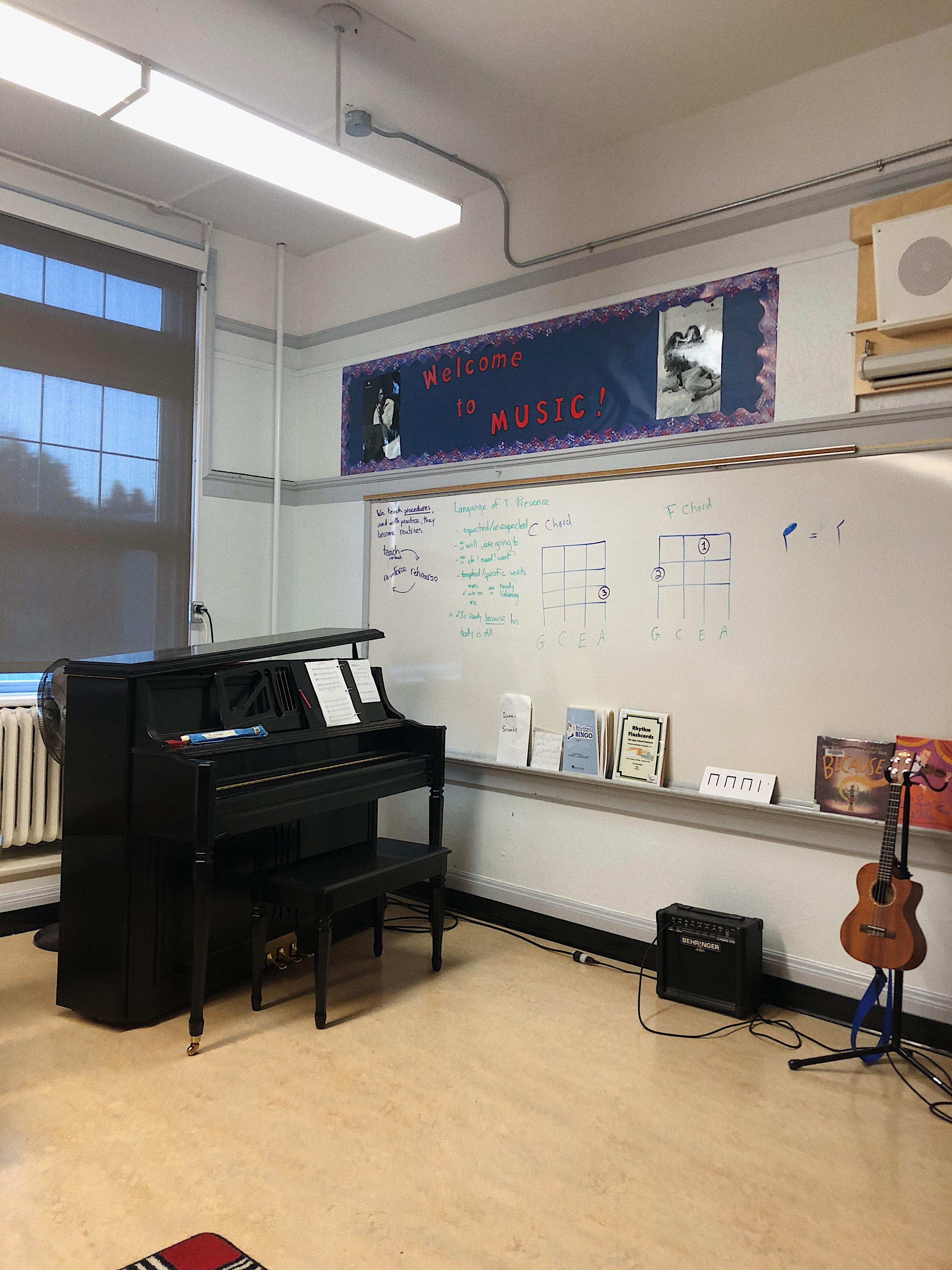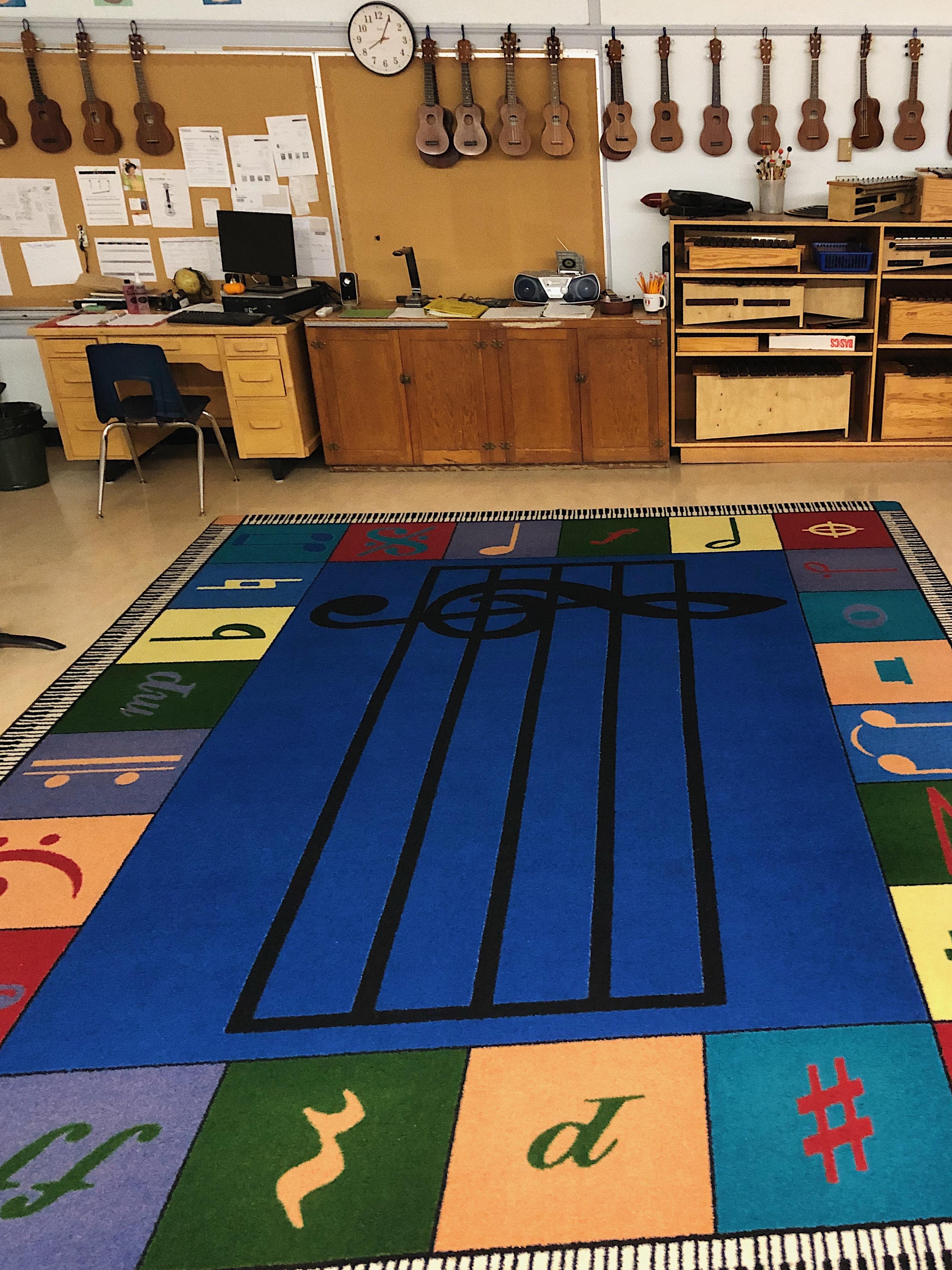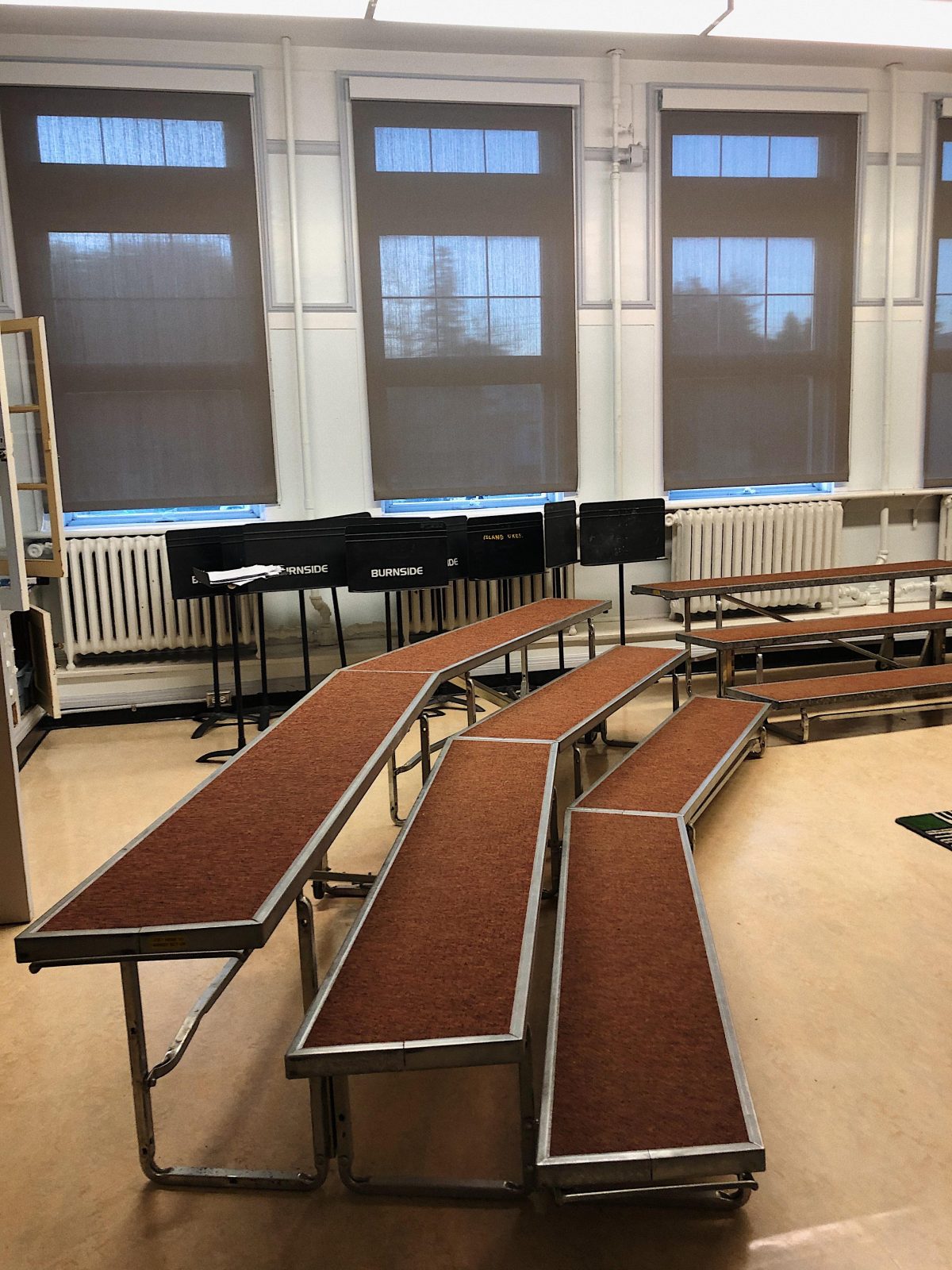Over the month of October I have had the chance to continually observe a music class at my assigned school. My experience has varied in this classroom, as I have had the pleasure of watching two entirely different generations teach. Through this experience I can conclude that there are as many similarities as there are contrasts between both educator’s teaching styles. In this blog post I will discuss the classroom set-up , classroom routine, and compare and contrast my observations of a full-time music teacher (very new in his position), and a retired substitute teacher.

 This particular classroom is set in a 100+ year old school, located in Victoria British Columbia. As the students walk into the classroom with south facing windows, the space is warm, airy and inviting. At the door, the new teacher hands out laminated cards with music symbols on them. No matter the grade, each class is to find a spot along the edge of the bright and colourful carpet, that matches the symbol indicated on their personal card. Using this strategy, it is guaranteed that each student is in a new peer group every class.
This particular classroom is set in a 100+ year old school, located in Victoria British Columbia. As the students walk into the classroom with south facing windows, the space is warm, airy and inviting. At the door, the new teacher hands out laminated cards with music symbols on them. No matter the grade, each class is to find a spot along the edge of the bright and colourful carpet, that matches the symbol indicated on their personal card. Using this strategy, it is guaranteed that each student is in a new peer group every class.
Classroom
In a school as old as this one, it is not hard to find the space extremely charming (I was almost convinced that I had stepped onto the set of Gilmore Girls).
Why it works
- The use of a music themed carpet to organize the students into a specific seating arrangement allows classroom management to stay on-theme. Furthermore, implementing an everyday object (in this case a carpet) that students are forced to interact with weekly, instills repetitive learning and further strengthens knowledge.
- The use of Uke holders on the wall above the whiteboard allows for the safety of the small instruments, minimizing the risk of damage. Out of sight out of mind, they are hung high above the whiteboard, therefore if they aren’t quite “out of mind” they are inaccessible and draw the student’s eyes up the board where the lesson takes place. It would have an opposite effect if the ukuleles were hung on the opposite wall, as a student’s distracted behaviour would be projected with body language facing opposite to the lesson; most likely causing a disruption to the surrounding students.
- There are very little posters around the classroom. The brightest words that I could find were “Welcome to Music”. The placement of these words were off the the side of the front of the classroom, above the piano where the teacher(s) typically spends their time. The idea of a neural-coloured classroom is extremely appealing to me, as I believe that it can:
- Deplete distractions as there are less stimulating colours and shapes
- Deplete “cheating” / looking for answers before trying to recall information
- > enhances learning and memory
- Helps students who have trouble staying calm
- The discussion of neutral vs. colourful classrooms was really interesting to me, here is a blog that I found created by another teacher, called:
Miss Therrien’s E-portfolio
I will first speak to my observations regarding a new primary full-time music teacher. There are many elements of his teaching that transpose into an inclusive, welcoming, and creative classroom culture.
What Works:
- Implements “teacher talk” as a means to gear children towards the objective of his lesson without overpowering their opinions.
- His use of colourful decor in the classroom
- Use of microphone so that all children could hear him at all times
what does’nt work
- His short temper towards the energy of his students, and the lack of patience he brings into the classroom. You can tell that he is passionate and has a carefully curated a lesson plan and WANTS to get through it.
